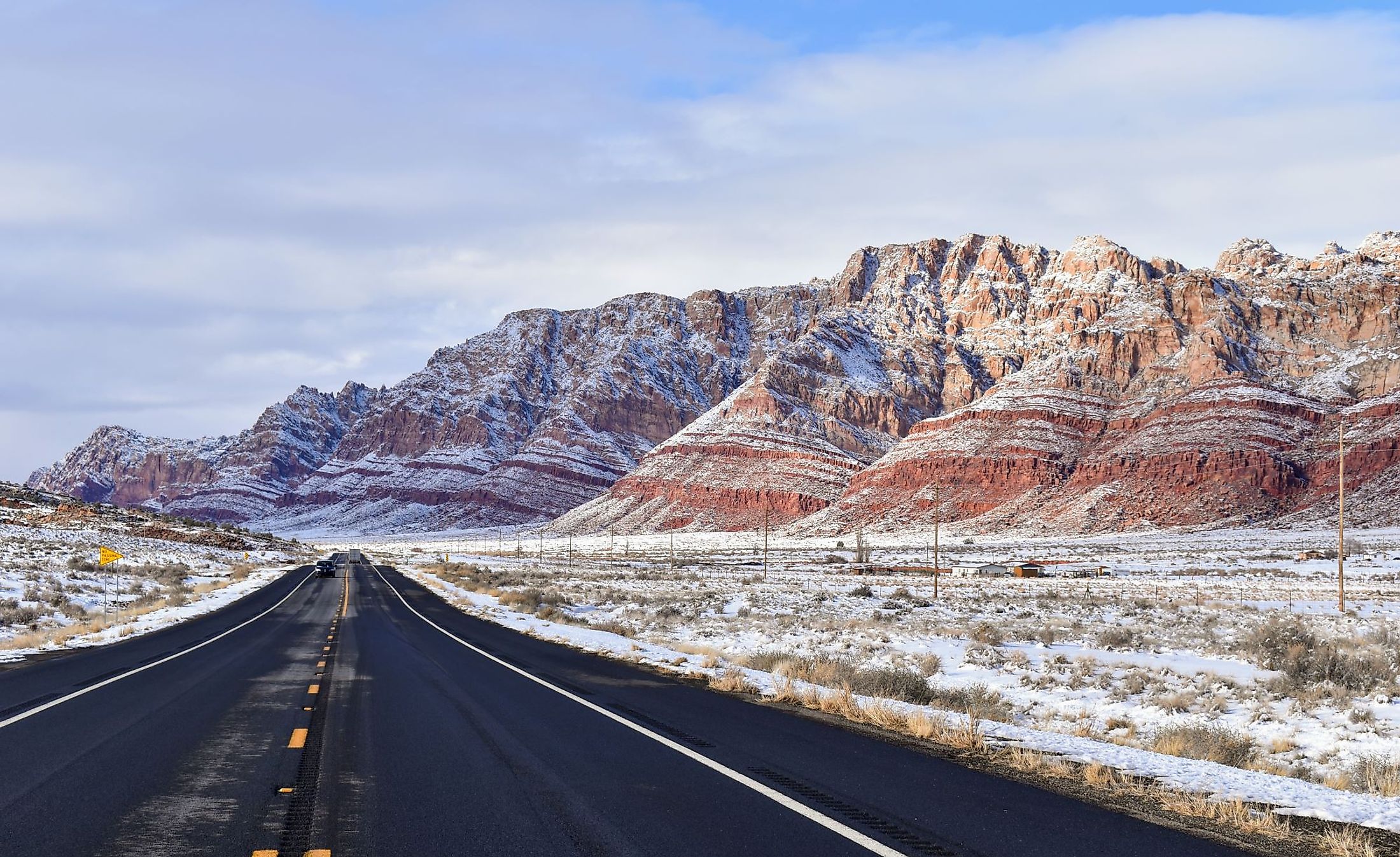
Painted Desert, Arizona
Painted Desert is a desert of colorful badlands situated in the Four Corners region in the Southwestern United States. The desert spreads out from the eastern end of the Grand Canyon National Park in a southeasterly direction into the Petrified Forest National Park. The Painted Desert is well-known for the brilliant hues of its colorful hills, sculptured buttes, and flat-topped mesas.
Geography And Climate Of Painted Desert
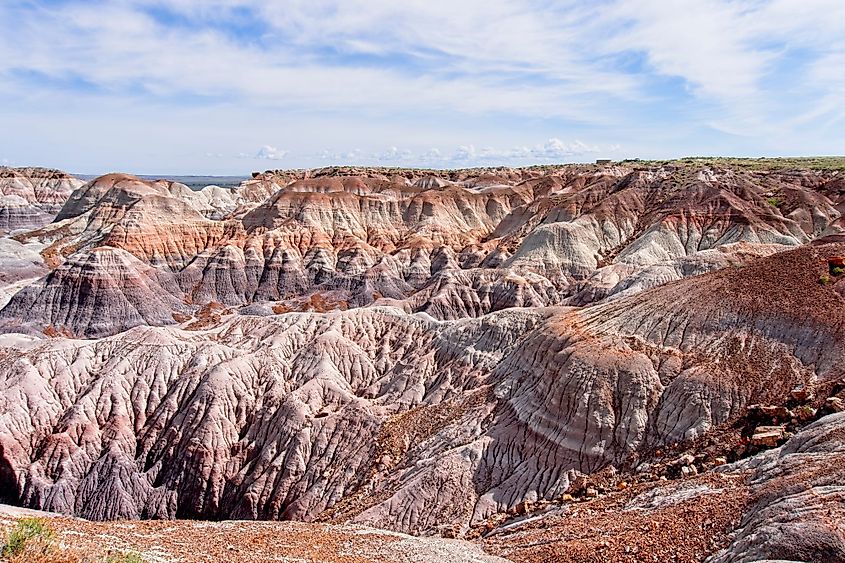
The Painted Desert extends from Arizona’s Cameron-Tuba City in a southeast direction along the Little Colorado River’s northern side, past the city of Holbrook into the Petrified Forest National Park. Covering an area of 19,400 sq. km, the Painted Desert is about 240 km in length, and its maximum width ranges between 25 to 80 km. The Mogollon Plateau borders the Painted Desert in the southwest and south, with Mogollon Rim forming the plateau’s southern border. With a major portion of the Painted Desert being situated in the remote areas of the Navajo Nation, the desert’s southeastern section, which is located within the northern portion of the Petrified Forest National Park, can be easily reached.
As per the Koppen Climate Classification, the Painted Desert experiences a cold desert climate, mainly due to Mogollon Rim’s strong rain shadow. The area has hot, dry summers and chilly winters, with annual temperature extremes up to 41°C and precipitation ranging from 5 to 9 inches.
History Of Painted Desert
In 1540, the Spanish conquistador Francisco Vazquez de Coronado led an expedition to the area to search the mythical “Seven Cities of Cibola.” During this search, his expedition passed through this wonderland of colors, which Coronado named in Spanish “El Desierto Pintado.” Approximately three centuries later, a government explorer named Lieutenant Joseph C. Ives was sent to a survey in the area. In 1858, Lieutenant Ives first used the name “Painted Desert” to describe this brilliantly colored landscape.
Geology Of Painted Desert
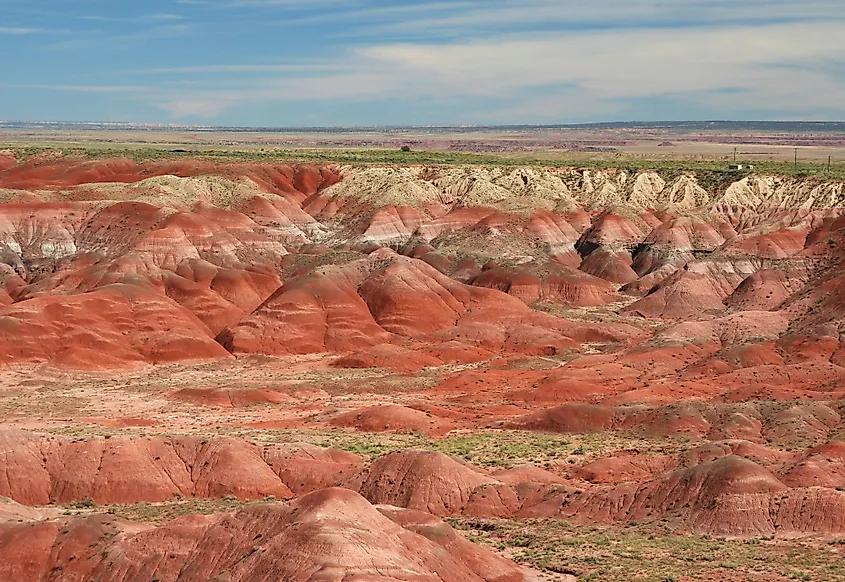
The Painted Desert is primarily composed of stratified layers of shale, mudstone, and siltstone of the Chinle Formation dating back to nearly 200 million years. The iron and magnesium deposits pigment these easily erodible fine-grained rock layers. The mesas are capped by resistant, lacustrine limestone layers and volcanic flows. Due to years of winds, floods, and volcanic activities, the soil in this area consists of a soft layer of volcanic ash and mud.
This range of colors chiefly exists in the northern region of the desert. However, the southern portion of the desert embraces pale layers of lavender, gray, and blue colors due to floods and rain wiping oxygen from the soil. The southern portion of the Painted Desert contains the remains of a coniferous forest that has been fossilized for more than millions of years. Moreover, this part of the Painted Desert also contains several historic structures and archaeological sites.
Flora Of Painted Desert
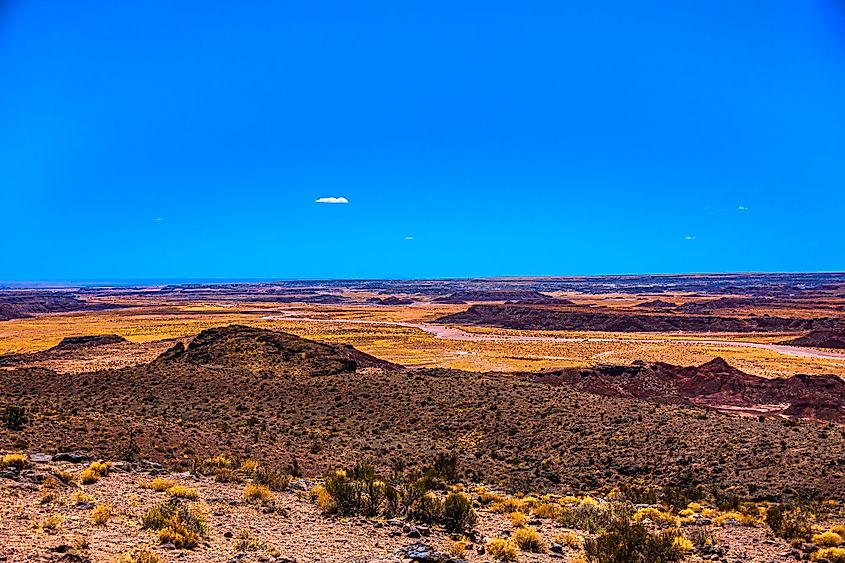
The Painted Desert is more than just rocks and stones. It is home to diverse flora including shrubs, wildflowers, grasses and cacti. The most common shrubs found here are saltbush and sagebrush, which have grayish-green leaves. In addition, cliffrose has creamy-scented flowers and rabbitbrush with glowy golden blossoms. Cholla, prickly pear, paper spine, and hedgehog are also very common in the region.
Fauna Of Painted Desert
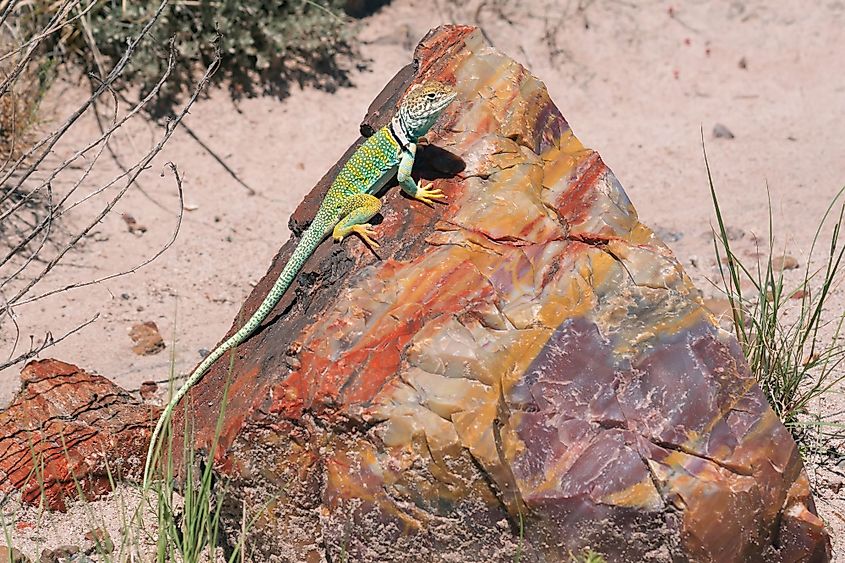
The Painted Desert is home to a diverse array of animals. Most of these animals, including insects, spiders, reptiles, birds, and mammals, are found in the Petrified Forest National Park. The activity of these animals depends on the seasons and weather. For example, crepuscular animals are active at dawn and dusk, the chilliest times of the day. However, snakes and lizards are active during the day in spring and fall. Still, they become crepuscular during the heat of summer. Many animals in the park are nocturnal, not only to avoid the heat but also to avoid predators.
Other Attractions In Painted Desert
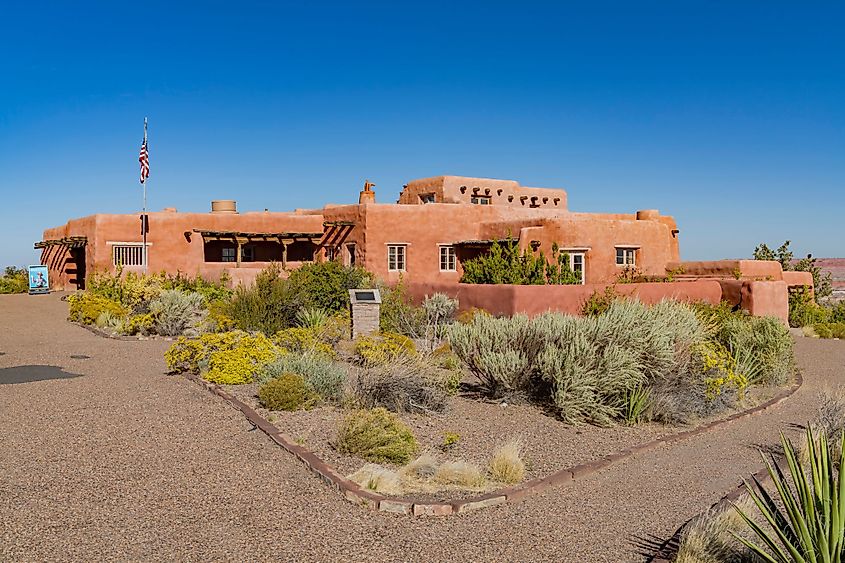
The Painted Desert Visitor Center, located in the northern end of the Petrified Forest National Park, offers a 17-minute film for its visitors which shows how the wood became petrified. A 43 km drive takes one through the national park, which allows one to witness the wonders of the desert. The Painted Desert Inn Museum has been built on a mesa overlooking the vast Painted Desert at the national park's northern section. The Rainbow Forest Museum is located at the park's southern end.











